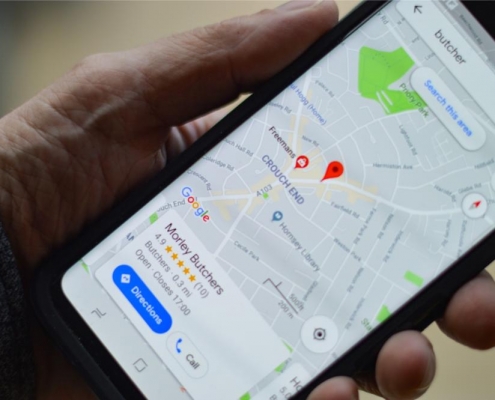How Better Prospecting Can Skyrocket Sales for Small Businesses in Australia
Small businesses often face fierce competition to capture customer attention and drive sales. Prospecting in business is the lifeblood of any thriving deal. It will find and connect the right people—those potential customers who are most likely to love what you offer and become loyal buyers. For small businesses in Australia, smart prospecting isn’t just a nice-to-have; it changes everything.
Pick the right strategies, and you can make the most of your time and budget, build stronger relationships, and grow your revenue. Here we propose practical, actionable tips and tools to supercharge your sales prospecting and take your business to the next level.
With limited budgets and resources, small businesses must focus on efficient, high-impact methods to grow their customer base. We created this small business sales guide to give you proven wow techniques that use statistics and real-world applications. These superb methods will help your business thrive in a competitive landscape.
Understanding Prospecting in Business
What is prospecting in business? Prospecting involves identifying and reaching out to potential customers who align with a business’s products or services. It’s the first step in the small business sales process, aimed at filling the sales pipeline with qualified leads. For small businesses in Australia, where local markets can be highly specific, prospecting requires a deep understanding of customer needs and preferences. According to a 2024 study by HubSpot, 82% of buyers accept meetings when salespeople reach out proactively, highlighting the importance of effective prospecting. By focusing on targeted outreach, businesses can avoid wasting time on uninterested leads.
Prospecting differs from lead generation, which focuses on attracting interest through marketing. Prospecting is a sales tactic that involves direct engagement, such as emails, calls, or social media outreach. For small businesses, this means tailoring efforts to local demographics, industries, or even regional preferences, such as targeting eco-conscious consumers in Melbourne or tech startups in Sydney.
Why Effective Prospecting Matters for Small Businesses
Effective prospecting is critical for small businesses aiming to maximise sales for small business growth. With limited resources, every outreach effort must count. A 2024 report by Forbes Advisor notes that businesses with a defined prospecting strategy convert leads at a 10% higher rate than those without. When you identify prospects that bring a lot, your business can focus its efforts on leads who will likely come back, reducing wasted time and resources.
Small businesses often compete with larger corporations, that is why making precise targeting is essential. Prospecting allows businesses to draw customers who value personalised service. It is a real strength of a smaller bakery over a factory. For instance, a boutique café in Brisbane can use prospecting to target local office workers with tailored promotions, fostering loyalty and repeat business. By prioritising quality over quantity, prospecting for sales drives sustainable growth.
Building a Prospect List for Business Success
Building a prospect list for business starts with defining an Ideal Customer Profile (ICP). An ICP outlines the characteristics of customers most likely to benefit from a business’s offerings, such as demographics, industry, or purchasing power. For example, a Sydney-based IT consultancy might target startups with 10-50 employees needing cybersecurity solutions. Research shows that businesses using ICPs see a 14% increase in email click-through rates.
Actionable steps to build a prospect list include:
- Analyse existing customers to identify common traits, such as location or pain points.
- Use tools to find verified contact details for prospects on platforms like LinkedIn.
- Leverage local business directories, such as Yellow Pages Australia, to identify regional prospects.
- Attend industry events or networking sessions in cities like Melbourne or Perth to gather leads.
A tool simplifies prospecting by allowing users to register for a free trial, install a browser extension, and extract verified emails and phone numbers from social profiles. This ensures businesses connect with decision-makers efficiently.
Top Sales Prospecting Strategies for Australian Small Businesses
These practical, Aussie-focused prospecting strategies blend global best practices with local know-how to help you connect with the right customers and boost your sales. Here are the ways how you can make prospecting work for your business.
Leveraging Local Market Research
Research is the foundation of successful prospecting in business. Small businesses must understand local market dynamics, such as consumer preferences in urban hubs like Sydney or regional areas like Tasmania. A 2025 Shopify report highlights that businesses using targeted research convert 15% more leads than those relying on generic outreach. For example, a Perth-based fitness studio can research local demographics to target health-conscious professionals aged 25-40.
Actionable steps include:
- Analyse competitors’ customer reviews on platforms like Google My Business to identify unmet needs.
- Use social media analytics to track trending topics in Australian markets.
- Conduct surveys via email or social media to understand customer pain points.
Tools can streamline research by providing verified contact details, allowing businesses to focus on crafting personalised pitches.
Personalising Outreach for Better Engagement
Personalisation is a cornerstone of sales prospecting best practices. Consumers value authenticity, with 90% preferring brands that offer tailored experiences. Generic emails or calls are likely to be ignored, especially in a market flooded with marketing messages. For instance, a Melbourne-based artisanal bakery can personalise emails by referencing a prospect’s recent social media post about local food festivals.
Steps to personalise outreach:
- Use data to address prospects by name and reference their industry or role.
- Tailor email subject lines to reflect specific pain points, e.g., “Boost Your Sydney Startup’s Growth with Our Solution.”
- Follow up with prospects on platforms they’re active on, such as LinkedIn or Instagram.
Personalisation builds trust, increasing the likelihood of prospects engaging with outreach efforts.
Using Social Media for Prospecting
Social media is a powerful tool for prospecting for sales, especially in Australia, where 80% of the population is active on platforms like Instagram and LinkedIn. Small businesses can use social media to identify prospects, engage with their content, and build relationships. For example, a Brisbane-based graphic design agency can connect with local startups on LinkedIn by commenting on their posts or sharing relevant content.
These strategies are designed to help businesses efficiently identify and engage high-potential prospects in the market.
| Platform | Tool/Feature | Actionable Strategy | Benefit for Small Businesses |
| LinkedIn Sales Navigator | Use advanced filters to target prospects by location (e.g., Sydney or Melbourne), industry, or company size (e.g., startups with 10-50 employees). | Pinpoints decision-makers, reducing time spent on unqualified leads. | |
| Stories and Posts | Share visually appealing content, such as behind-the-scenes posts or customer testimonials, to attract local prospects in cities like Perth or Adelaide. | Builds brand authenticity and engages younger audiences. | |
| Facebook Groups | Join local business groups (e.g., Canberra Small Business Network) to share expertise and connect with potential clients. | Fosters community trust and generates referrals within local markets. | |
| Multiple Platforms | Hootsuite or Buffer | Automate posts to maintain a consistent online presence, scheduling content like industry tips or case studies to position the business as a thought leader. | Saves time while ensuring regular engagement with prospects. |
| LinkedIn/Instagram | SignalHire Browser Extension | Extract verified contact details from prospect profiles for personalised outreach, as shown in SignalHire’s tutorial video. | Streamlines contact collection, enabling direct and effective communication. |
By engaging authentically, businesses can turn social media interactions into meaningful sales opportunities.
Harnessing Referrals and Networking
Referrals are a goldmine for small business sales, particularly in Australia’s tight-knit business communities. Top-performing salespeople regularly ask for referrals, compared to just 26% of average performers. Satisfied customers can introduce businesses to new prospects, amplifying reach without significant costs. Networking events, such as those hosted by Business Australia, also provide opportunities to meet potential clients.
Steps to leverage referrals:
- Offer incentives, such as discounts, for customers who refer new clients.
- Attend local Chamber of Commerce events or industry meetups in cities like Adelaide or Canberra.
- Follow up with referred prospects promptly using verified contact details.
Referrals and networking tap into trust-based relationships, making them highly effective for small businesses.
Automating Prospecting with Tools
Automation tools streamline the small business sales process, saving time and improving efficiency. Platforms like SignalHire and Bitrix24 allow businesses to automate lead capture, contact verification, and follow-ups. Businesses using automation tools see a 20% increase in lead conversion rates. For small businesses with limited staff, automation is a game-changer.
Steps to implement automation:
- Register for a free trial to access verified emails and phone numbers. SignalHire allows its users seek emails in bulk.
- Install a browser extension to extract contact details from LinkedIn profiles.
- Use Bitrix24 to manage prospect databases and automate email sequences.
Automation frees up time for sales teams to focus on building relationships rather than manual tasks.
Effective Cold Calling and Email Strategies
Cold calling and emailing remain vital for how to prospect for sales leads, especially when done thoughtfully. In the modern world, where personal connections matter, a warm, empathetic approach can set businesses apart. In 2024, CloudTalk found that personalised cold emails achieve 3x higher response rates than generic ones. For example, a Cairns-based tourism agency can use cold emails to pitch tailored packages to local businesses for corporate retreats.
Actionable cold outreach tips:
- Craft concise, value-focused emails that address specific business prospect needs.
- Use a tool to verify contact details before reaching out.
- Schedule calls during optimal times, such as mid-morning, to reach prospects.
Combining cold outreach with personalisation ensures higher engagement and conversion rates.
Tracking and Measuring Prospecting Success
Measuring prospecting success ensures businesses refine their strategies for maximum impact. Key metrics include response rates, conversion rates, and the number of qualified leads generated. Businesses tracking prospecting metrics improve their sales outcomes by 12%. Small businesses can use CRM tools to monitor these metrics and identify areas for improvement.
Steps to track success:
- Set clear goals, such as contacting 20 prospects weekly.
- Use analytics dashboards to monitor email open rates and call outcomes.
- Regularly review and adjust strategies based on performance data.
Tracking ensures businesses see how Agile ATS works, adapting to what resonates with prospects.
Overcoming Common Prospecting Challenges
Small businesses often face challenges like limited resources, time constraints, and identifying qualified leads. 50% of prospects may not fit a business’s ICP, wasting valuable time. By using tools to verify contacts and focusing on high-potential leads, businesses can overcome these hurdles.
Strategies to address challenges:
- Prioritise prospects based on likelihood to convert, using ICP criteria.
- Automate repetitive tasks like data entry with CRM tools.
- Invest in team training to improve prospecting skills.
Addressing these challenges ensures businesses maximise their prospecting efforts.
Conclusion
For Aussie small businesses, nailing prospecting is the key to growing sales. It will zero in on the right customers and build real connections that last. Define your ideal customer, and find someone who needs what you offer. Tools like SignalHire make it easy to find the right contacts. Personalise your outreach to feel genuine, like a friendly chat. Tap into social media and referrals to spread the word, and use automation to save time on repetitive tasks. Track your results to keep improving. This approach helps turn leads into loyal customers and grows your business. Business owners can implement these sales prospecting tips to stay competitive and drive growth.
***************
Dewey Grant







